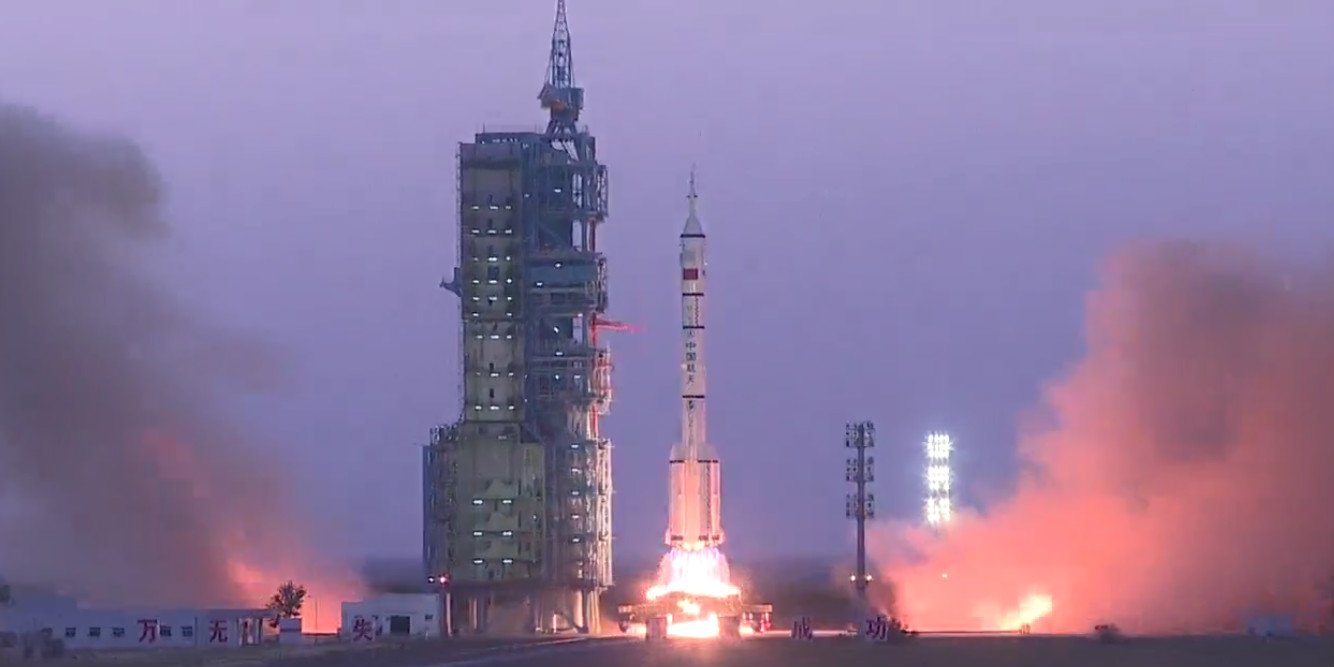At approximately 7:30 am (BJT), the Chinese spacecraft Shenzhou-11 lifted off from Jiuquan Satellite Launch Centre in the Gobi Desert. A Long March 2F rocket sent the vessel and its two astronauts into orbit where it will dock with the Tiangong-2 space lab, launched last month.
WATCH the Shenzhou-11 launch

Astronauts Jing Haipeng and Chen Dong carried out the Shenzhou-11 mission. The 50-year-old Jing is commander of the mission. This will be his third space mission, having previously served on the Shenzhou-7 mission in 2008 and Shenzhou-9 mission in 2012.
This is the first space mission for 38 year old Chen, who was born in central China’s Henan Province.
Learn more about the Tiangong-2 space lab
This will be the sixth manned mission for China’s rapidly expanding space program. If all goes according to plan, the 30 day stay aboard the Tiangong-2 will more than double the national record for longest time in space for its astronauts.
While the previous two Shenzhou missions in 2012 and 2013 carried three astronauts, the crew size for this mission was reduced to extend duration upon the Tiangong-2.

Chinese astronauts Jing Haipeng, left, and Chen Dong, right, chat during a presser at the Jiuquan Satellite Launch Center in northwest China Sunday Oct. 16, 2016. (Chinatopix Via AP)
Shenzhou-11’s mission to the Tiangong-2 will give astronauts an opportunity to test onboard systems aboard the space lab, including life support, computers, propulsion, and lab equipment. They will also commence experiments in the research section of the craft. These initial activities are designed to help China move toward its goal of a modular and much larger permanent space station, which is slated to be launched sometime in 2018.
“This is going to provide evidence of astronauts’ long-term stay in space for the development of China’s space station in the future,” Lei Fanpei, chairman of the China Aerospace Science and Technology Corporation (CASC) told CCTV.
The Tiangong-2 is considered to be a working prototype for the upcoming modular space station, which aims to be China’s most ambitious venture in orbital technology to date.
In March Zhou Jianping, chief designer of China’s human space program stated the Chinese space station project will include three modules, two 30m solar panel ‘wings’, two robotic arms and a Hubble-class telescope. The Tianhe-1 will be the core module for that station, which will join with two other modules in the following years. The final orbital assenbly is expected to be complete by 2022.

Tiangong-2 is a working prototype for Tianhe-1, the core module for China’s first modular space station which will be launched around 2018.
The docking of Shenzhou-11 with Tiangong-2 will take place approximately two days after Sunday’s liftoff, when both vehicles are in compatible orbit.
The Chinese word Shenzhou translates to “heavenly vessel” in English. Tiangong translates to “heavenly palace.”
Many were on hand Monday as the Long March 2F rocket with Shenzhou-11 atop was moved from its hangar to the launch pad at the Jiuquan Satellite Launch Centre.
Shenzhou-11 on social media
What comes next?
The Shenzhou-11 mission will be followed in April by the unmanned Tianzhou-1 cargo vessel, which will test refueling systems at the Tiangong-2. These systems are considered crucial for sustaining future space stations over the long term.
The Tiangong-2 and Shenzhou-11 launches take place in a period of rapid development and activity for China’s space program – with a total of 20 launches scheduled for 2016 alone. Earlier in the year saw deployment of QUESS, the world’s first quantum communications satellite, Ziyuan-3-II remote sensing satellite, the Yaogan-30 military satellite, the Shijian-10 retrievable microgravity space science probe in April, three Beidou satellites in February, March and June, and the Belintersat-1 communications satellite to geosynchronous orbit for Belarus in January.
In addition, plans were released for Chang’e-4, the world’s first mission to land on the far side of the Moon set for late 2018. Sweden, Germany and the Netherlands will contribute payloads to this mission. Chang’e-4 will launch after a relay satellite is placed in synchronous orbit beyond the Moon to allow communication.

The far side of the Moon, as seen by China’s Chang’e-5-T1 test mission launched in 2014 (Courtesy: SASTIND)
The year 2016 also marks the 46th anniversary of China’s space program, which was celebrated on its first ever “Space Day” April 24th. The occasion was also used to announce a planned Mars probe around 2020, which aims to reach the planet in 2021 when the Communist Party of China marks its centenary.
 CGTN America
CGTN America



